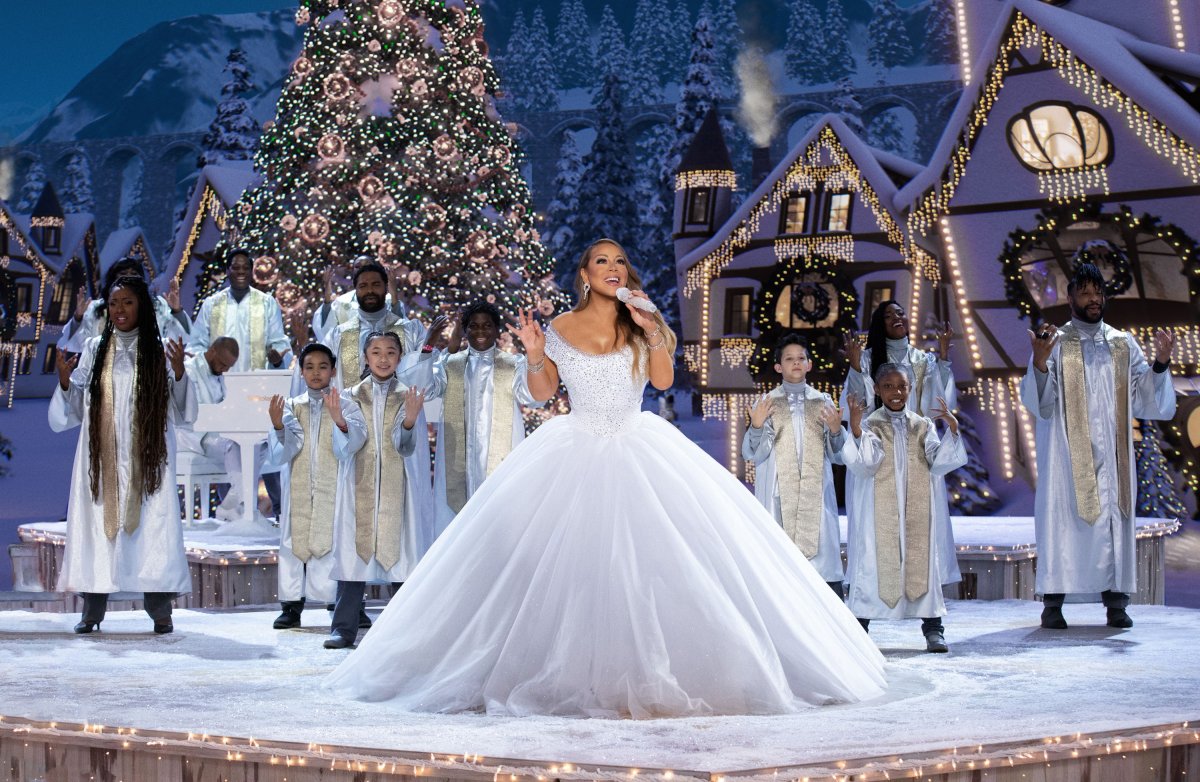With American Thanksgiving, the retail carnage of Black Friday just a few days away (anyone got the over/under on how many people will be injured?), and the appearance of Santa Claus parades, it’s officially Christmas season.

That means for the next five weeks, holiday music will be blasting at every turn.
The creep actually began months ago. In late August, I dropped into my local Canadian Tire looking for some garden supplies. I couldn’t find what I wanted because the shelves were filled with Christmas decorations. When I got back to the home office, I saw that one of the digital music delivery services I use sent me Brenda Lee’s Rockin’ Around the Christmas Tree. It was Aug. 28. It was followed a day or so later by several more Christmas songs.
The people of the Philippines take Christmas so seriously that they begin preparations Sept. 1. This included the first seasonal spins of Mariah Carey’s All I Want for Christmas is You on radio stations in Manila and beyond, which seems a bit much, even for Mariah. “My personal preference is to wait until after Thanksgiving. But there’s no regulating festiveness!!!” She also posted “I’ll allow it for my Filipino lambs, though! I don’t make the rules!”
But on Nov. 1, she broke her own rule with this video.
This is also the time of year when a not-insignificant number of radio stations switch to an all-Christmas format. This has been a thing since at least 1990 when 99.9 KEX/Phoenix toyed with the idea. But the biggest instigator was, believe it or not, the terrorist attacks of Sept. 11, 2001. Realizing that audiences needed cheering up, many stations across the U.S. went to an all-Christmas format early.
Gone were the old days of one-holiday song per hour, starting the first week of December, slowly ramping up until stations went all-in on Christmas Eve and Christmas Day. At the stroke of midnight on Dec. 26, it was back to regular programming. Today, many stations believe that there’s no such thing as too much Christmas music. Even though audiences claim that they don’t need Christmas music until early November (23 per cent) or early December (20 per cent), they don’t seem to mind when radio stations get an early start.
While some outlets have been known to make the change as early as September, it appears that WMGA-FM in Huntington, West Virginia, was first out of the gate in 2023, ditching their regular playlist for nothing but holiday fare on Oct. 19. WMXL-FM in Lexington, Kentucky, followed Oct. 31. Now they’re everywhere. (A 24/7/365 all-Christmas station once existed in Albany, New York, but it’s gone.)
- Jerry Seinfeld says the ‘extreme left’ and ‘PC crap’ killed TV comedy
- Gérard Depardieu in police custody over latest sexual assault allegations
- ‘Dream come true’: 6-year-old Diljit Dosanjh superfan dances onstage with his idol
- Billie Eilish Canada concert dates: ‘Hit Me Hard and Soft’ tour hitting 3 Canadian cities
Such programming is very smart. First, listeners seem to love the idea and tend to leave the radio on longer. Second, all stores and offices have to do to get Christmas rolling is turn on the radio. Ratings rocket upward —sometimes as much as 50 per cent — with the results appearing in January during the slowest time of the year for advertising. The holiday music ratings boost means substantial additional revenue through commercial sales when things can be very dead for competitors. It also sets things up for the following year as advertisers scramble to place ads during a high-ratings period. Many all-Christmas stations will sell all their commercial inventory for the following November/December by the end of the previous July.
All these stations draw from a pool of perhaps 350 tried-and-true songs. Of those, around 25 are considered to be “powers,” radio-speak for songs that audience research has determined are bullet-proof in their popularity. Radio programmers know that you can’t play these songs enough. The aforementioned Mariah Carey and Brenda Lee. There’s also Johnny Helms’ Jingle Bell Rock (1957), It’s Beginning to Look a Lot Like Christmas (the Johnny Mathis version from 1986 is preferred), Burl Ives’ Holly Jolly Christmas (1964), Elvis and Blue Christmas (1964), virtually any version of Rudolf the Red-Nosed Reindeer (but the Gene Autry rendition from 1949 seems the most timeless), and Felice Navidad, Jose Feliciano’s 1970 recording.
Again, tradition rules. The late 1950s and early 1960s were some kind of golden era for non-religious Christmas songs. In addition to the songs I just mentioned, that era gave us The Christmas Song and Deck the Halls from Nat King Cole (both 1960); Sleigh Ride from The Ronettes (1963); Andy Williams’ The Most Wonderful Time of the Year (1963), and more Brenda Lee with Jingle Bell Rock (1964).
It’s hard to burn out a Christmas song. Yes, you may hear it a million times in the five weeks leading up to the big day, but then it goes back on the shelf for another 47 weeks. By the time the following season rolls around, we’re ready to hear them again. And with holiday songs, it doesn’t matter if they sound old. That’s actually part of their charm.
Another way to extend the appeal of a traditional Christmas song is to sprinkle in alternate versions. That’s why everyone from Michael Bublé to Josh Groban to Rob Halford of Judas Priest have all released albums featuring their versions of all-time classics. Rather than play just Bing Crosby’s 1943 recording of I’ll Be Home for Christmas, radio programmers can switch it up with versions by Scott Weiland, Pentatonix, Kelly Clarkson, Rascal Flatts, Camila Cabello, and a half-dozen others.
Then there are the artists who manage to create brand-new Christmas classics, although that’s exceedingly rare. Again, you need a song that will compete with decades of tradition. But it can be done. Paul McCartney dashed off Wonderful Christmastime during the sessions for the McCartney II album in 1979, playing every single instrument himself. George Michael hammered out Last Christmas in less than half an hour in 1986 after the melody came to him while watching TV one night. It took Mariah Carey and Walter Afanasieff just 15 minutes to come up with All I Want for Christmas is You in the summer of 1994.
Streaming music platforms are changing the game, too. Rather than tune into an all-Christmas radio station, people have options with Spotify, Apple Music, and all the rest. This is where we find some decidedly non-traditional songs bubbling up as favourites, such as Santa Tell Me by Ariana Grande and Underneath the Tree by Kelly Clarkson. While the annual cheques for streams may not be as big as what artists and composers receive for radio airplay, these songs are proving to be rather evergreen, offering a nice revenue boost year after year.
So when should Christmas music end? Industry research says that the vast majority of people (60 per cent) are happy with seasonal stuff until New Year’s Eve. At 12:01 am Jan. 1, it needs to stop. Immediately. Another 17 per cent want it to stop at 12:01 am Dec. 26.
Me? I’m still suffering from working in a grocery store when I was in high school and university. Come Nov. 20, the store manager’s wife put on a 14-song 8-track on repeat. Through a nine-hour workday, I heard Holly Jolly Christmas no less than 10 times. The song still triggers unpleasant flashbacks.
—
Alan Cross is a broadcaster with Q107 and 102.1 the Edge and a commentator for Global News.
Subscribe to Alan’s Ongoing History of New Music Podcast now on Apple Podcast or Google Play





Comments